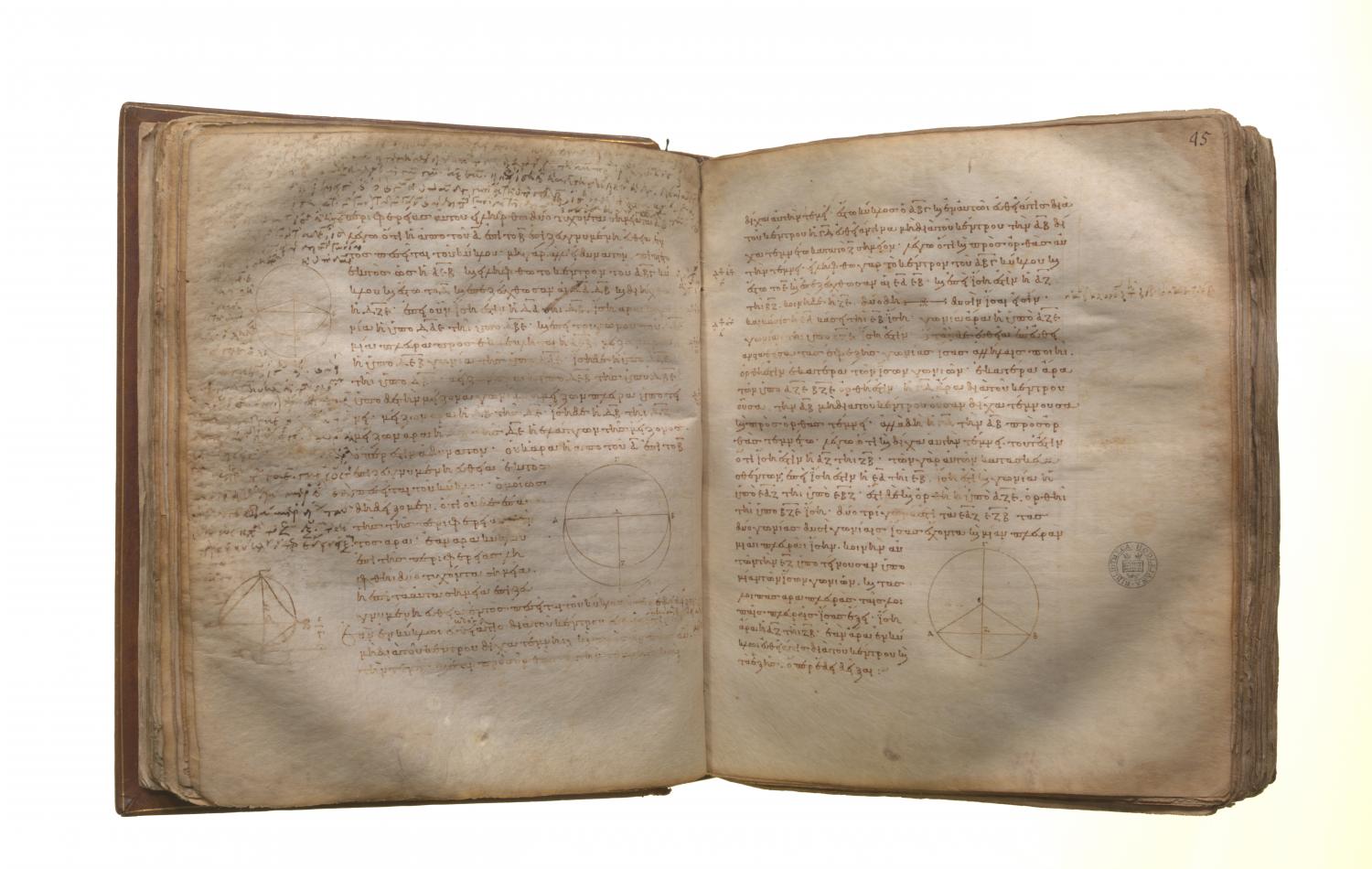Translations
If in a circle a straight line through the centre bisect a straight line not through the centre, it also cuts it at right angles; and if it cut it at right angles, it also bisects it. Let ABC be a circle, and in it let a straight line CD through the centre bisect a straight line AB not through the centre at the point F; I say that it also cuts it at right angles. For let the centre of the circle ABC be taken, and let it be E; let EA, EB be joined. Then, since AF is equal to FB, and FE is common, two sides are equal to two sides; and the base EA is equal to the base EB; therefore the angle AFE is equal to the angle BFE. [I. 8] But, when a straight line set up on a straight line makes the adjacent angles equal to one another, each of the equal angles is right; [I. Def. 10] therefore each of the angles AFE, BFE is right. Therefore CD, which is through the centre, and bisects AB which is not through the centre, also cuts it at right angles. Again, let CD cut AB at right angles; I say that it also bisects it. that is, that AF is equal to FB. For, with the same construction, since EA is equal to EB, the angle EAF is also equal to the angle EBF. [I. 5] But the right angle AFE is equal to the right angle BFE, therefore EAF, EBF are two triangles having two angles equal to two angles and one side equal to one side, namely EF, which is common to them, and subtends one of the equal angles; therefore they will also have the remaining sides equal to the remaining sides; [I. 26] therefore AF is equal to FB
